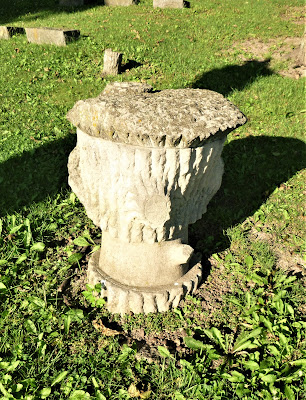My archeology pals overseas are always picking up odd little bits of artifacts. Bits and pieces of pottery and such from the Roman era on down. Here in the US of course it is much harder. I suppose there are arrowheads and such in some places but you have to look long and hard for them, and have your eye "tuned" for same.
Which is not to say that I don't come across anything on my frequent walks. On one of my usual routes I go through a city park and recently started noticing bits of glass at the base of a hillside. Over a couple of trips, and helped by heavy rains, I picked up a glittering pile of shards. So what can be learned from them?
Here's the collection. It is mostly shards of thick glass, the sort you find with beer bottles or especially soda bottles. They have to be thick to handle the pressure of carbonation.
Most of the identifiable shards are from the Alb. Nunke soda bottling works of Chippewa Falls. This makes sense, his factory was not far from the park, although I should point out it is NOT at the site of my finds. (For some reason digging up hillsides for objects of minimal value remains popular!)
There were examples of both small and large Nunke bottles. Here's what the smaller size looks like in one piece.
But there were some other things in the assemblage as well. This base has the markings of the Wisconsin Glass Company of Milwaukee. It is a bit early for Nunke, and none of his bottles are known to bear this marking. It might have been a competitor's bottle that came his way as a misplaced return. These usually were tossed.
But I don't think that this collection of discards was directly related to the Nunke bottling works. There were some other bottle fragments as well, things that had nothing to do with soda pop. This shard is of a particularly notorious patent medicine, Mrs. Winslow's Soothing Syrup.



















































